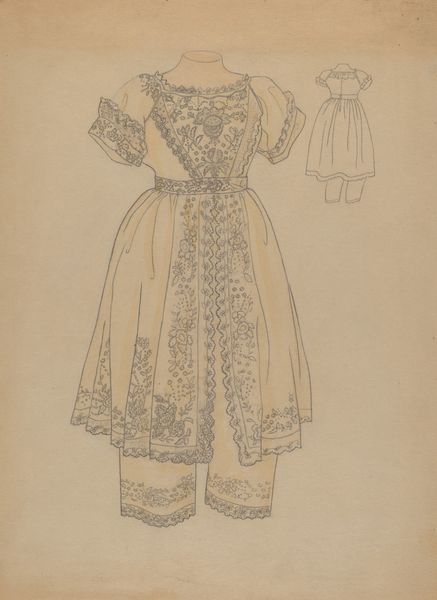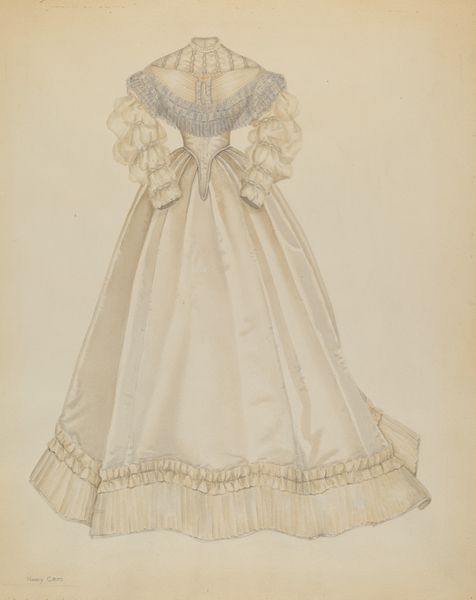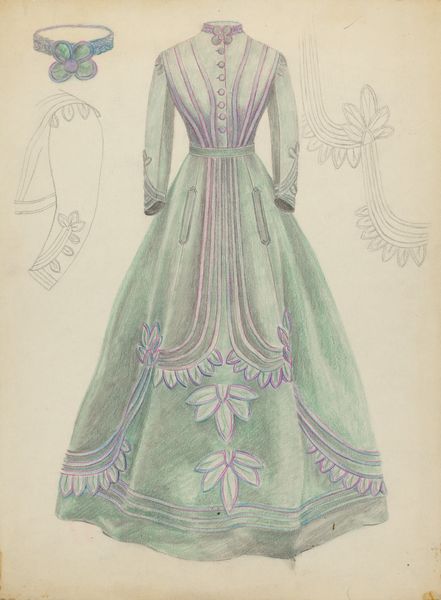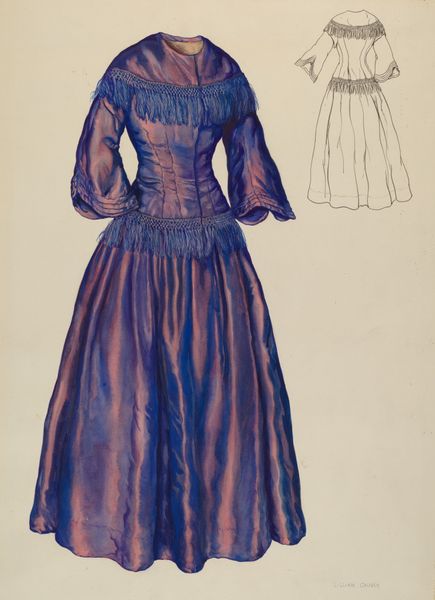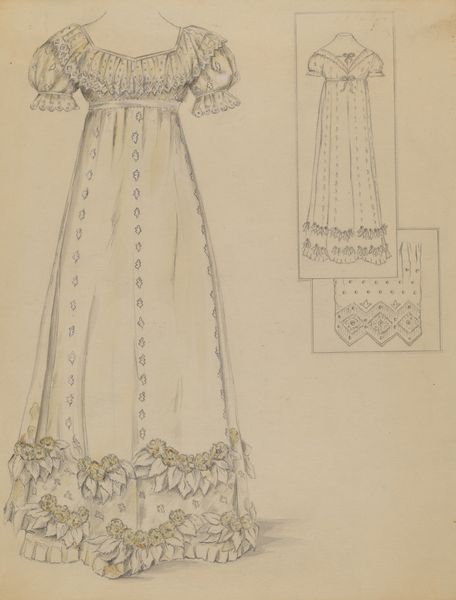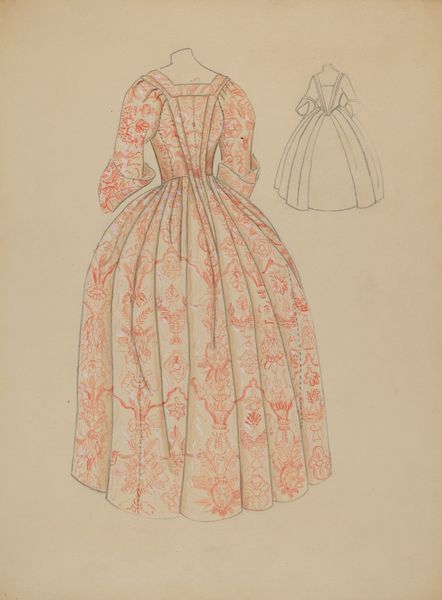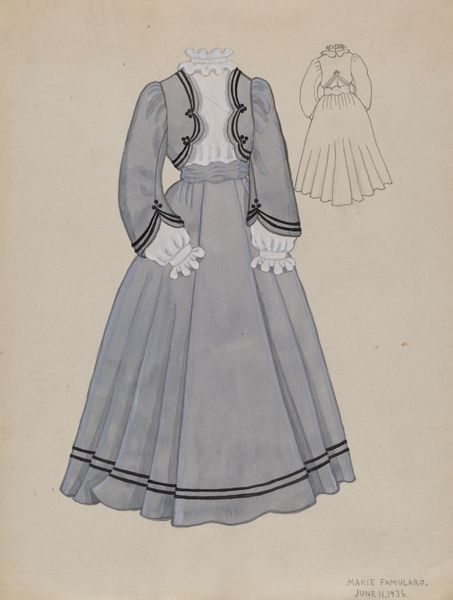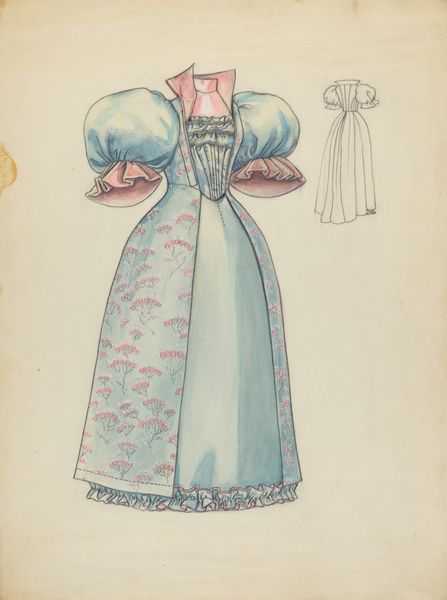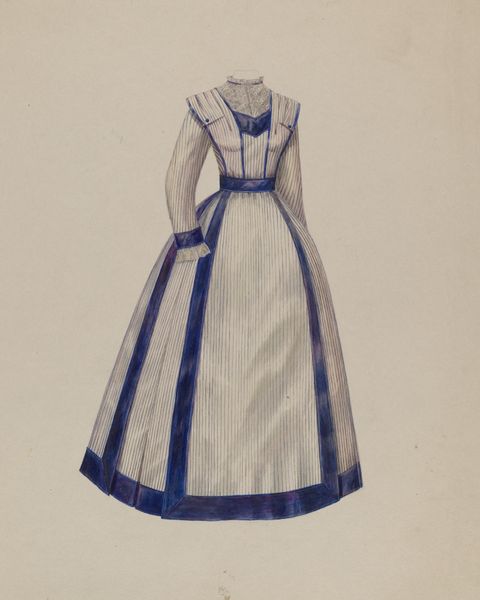
drawing, watercolor, pencil
#
drawing
#
aged paper
#
toned paper
#
light pencil work
#
quirky sketch
#
pencil sketch
#
sketch book
#
figuration
#
personal sketchbook
#
watercolor
#
sketchwork
#
pencil
#
sketchbook drawing
#
academic-art
#
sketchbook art
Dimensions: overall: 29.2 x 22.8 cm (11 1/2 x 9 in.)
Copyright: National Gallery of Art: CC0 1.0
Curator: This drawing, quite simply titled "Dress," comes to us from the sketchbook of Jessie M. Benge, around 1936. What strikes you first? Editor: That shade of blue! It feels like looking through faded glass, a delicate memory. And those huge sleeves-- so romantic. There’s a Victorian ghost hanging about, isn’t there? Curator: Yes! Benge captures the romantic era but also hints at the shifting fashions of her own time. Notice how the loose silhouette balances both eras. For me it’s like finding a vintage photograph in great-grandma's attic. What is this garment communicating to the world? Editor: Garments communicate power, status. Though here it's diluted, made almost innocent by the gentle palette and slightly awkward drawing style. There’s another ghostly rendering to the side, barely visible; I sense a design stillborn and left behind. Symbolically, dresses stand for persona. Curator: I feel Benge left it for interpretation: it could easily grace a debutante's ball or a dusty theatre costume department. Its incompleteness, its tentative lines, makes it seem almost… ephemeral. Editor: The paper's aging only accentuates that fragility, that sense of things slipping away. But then there's the row of stylized bows marching around the hem—they speak of formality. Reminding the wearer how to act in its attire and circumstances? Curator: I adore those bows—each one slightly different! I see them as imperfect attempts at a perfection of manners, maybe, a youthful striving to conform. Editor: They’re intriguing! They suggest celebration, decoration—also constriction, the ties that bind. Their strategic placement acts to ground what might easily float away like an unattainable dream of transformation, with echoes that suggest all dresses do that, acting to transform their wearer and any audience observing its visual impact. Curator: Absolutely. Benge's “Dress” shows both freedom and limitation. After all it is simply a study to represent an outfit to either exist on someone, somewhere; or die as another fashion victim. Editor: A tender moment, fleeting on toned paper… or as a comment on social pressure as garments change. Thank you Jessie, another great way to represent a single cultural signpost.
Comments
No comments
Be the first to comment and join the conversation on the ultimate creative platform.
